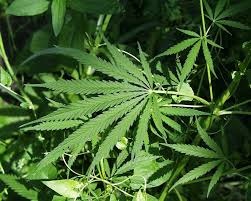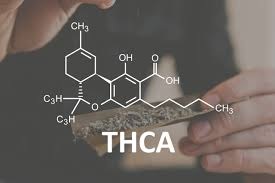Solvents play crucial roles in modern cannabis production, enabling the extraction of cannabinoids, terpenes, and other valuable compounds from plant material to create concentrated products that have become cornerstones of legal cannabis markets. Understanding how solvents work in cannabis contexts helps consumers appreciate the products they enjoy while making informed decisions about consumption preferences based on extraction methods.
The cannabis industry utilizes various solvent-based approaches to transform raw plant material into oils, concentrates, and other products that deliver potent effects in convenient formats. From the vape cartridges and dabs that experienced consumers favor to the precisely dosed edibles that newcomers appreciate, solvent extraction methods make these diverse product categories possible. Comprehensive knowledge about solvents, extraction processes, and safety considerations provides foundation for understanding modern cannabis manufacturing.
What Is a Solvent?
A solvent is a substance, typically liquid, capable of dissolving other materials to create solutions. In chemistry, solvents work by breaking molecular bonds in solutes—the substances being dissolved—allowing solute molecules to disperse evenly throughout the solvent medium. This fundamental chemical process enables countless applications across industries from pharmaceuticals to food production to cannabis extraction.
The defining characteristic of effective solvents involves their ability to dissolve specific compounds while leaving others intact. This selectivity makes particular solvents valuable for specific extraction applications where isolating target compounds from complex mixtures represents the primary goal. In cannabis contexts, ideal solvents dissolve cannabinoids and terpenes efficiently while minimizing extraction of unwanted plant materials like chlorophyll, waxes, and fats.
Solvent properties including polarity, boiling point, and chemical stability determine their suitability for different extraction applications. Polar solvents dissolve polar compounds effectively, while nonpolar solvents work better with nonpolar substances. This relationship between solvent and solute polarity guides selection of appropriate solvents for specific extraction goals in cannabis and other industries.
Common solvents range from familiar substances like water and alcohol to specialized chemicals including hydrocarbons, supercritical fluids, and various organic compounds. Each solvent type offers distinct advantages and limitations regarding extraction efficiency, safety, cost, and final product characteristics. Understanding these differences helps explain why cannabis manufacturers select specific solvents for particular products and desired outcomes.
What Are Solvents Used For in Cannabis Extraction?
Solvents serve as essential tools in cannabis extraction, enabling efficient separation of valuable cannabinoids and terpenes from raw plant material. This extraction process concentrates active compounds that exist at relatively low percentages in flower into potent oils and concentrates that form the basis for numerous cannabis products.
The primary purpose of using solvents in cannabis extraction involves dissolving cannabinoids, terpenes, and other desirable compounds from plant trichomes and tissues. These valuable compounds then remain dissolved in the solvent, creating solutions that separate from the remaining plant material. Subsequent processing removes the solvent, leaving behind concentrated cannabis extracts with THC levels often exceeding 70-90% compared to 15-30% in quality flower.
Cannabis manufacturers utilize solvent extraction to produce diverse product types including vape cartridge oils, dabbable concentrates, edible ingredients, and topical formulations. Each application may require slightly different extraction approaches and subsequent refinement steps, but solvent-based extraction provides the foundation that makes these concentrated products possible at commercial scales.
Beyond simple cannabinoid extraction, controlled solvent processes can selectively isolate specific compounds or preserve complete terpene profiles depending on extraction parameters. This flexibility allows manufacturers to create products ranging from pure THC distillates devoid of other compounds to full-spectrum extracts maintaining the complex chemical compositions found in whole plants. The ability to manipulate extraction outcomes through solvent selection and process parameters makes solvent extraction versatile for meeting varied product goals.
Efficiency and scalability represent practical advantages that make solvents attractive for commercial cannabis extraction. Solvent-based methods can process large quantities of plant material relatively quickly compared to some solventless alternatives, supporting the production volumes required by modern cannabis markets. This efficiency helps keep product costs reasonable while maintaining quality standards consumers expect.
The Basics of Solvent Extraction
Solvent extraction follows fundamental principles that remain consistent across different specific methods and solvents. Understanding these basics provides framework for comprehending more detailed discussions of specific extraction approaches and their applications in cannabis production.
The solvent extraction process begins with preparing plant material to maximize surface area exposure to solvents. Cannabis flower typically undergoes grinding or other size reduction that breaks trichomes and cellular structures, allowing solvents better access to cannabinoids and terpenes. This preparation step significantly influences extraction efficiency and completeness.
Introducing solvent to prepared plant material initiates the actual extraction phase. The solvent contacts cannabis material, dissolving target compounds through chemical interactions between solvent molecules and cannabinoids, terpenes, and other extractable substances. Extraction parameters including temperature, pressure, time, and solvent-to-material ratio all influence how completely and selectively solvents extract desired compounds while leaving unwanted materials behind.
Following sufficient extraction time, the resulting mixture contains dissolved cannabinoids and terpenes in the solvent along with remaining plant material. Separating this cannabinoid-rich solution from spent plant material typically involves filtration or similar mechanical separation methods that remove solid plant residues while retaining the valuable dissolved compounds in solution.
The final major step in basic solvent extraction involves removing the solvent from the dissolved extract, leaving concentrated cannabis oil. This solvent removal typically utilizes evaporation, often under vacuum conditions that allow solvent recovery at lower temperatures that help preserve temperature-sensitive terpenes. Proper solvent removal represents critical quality and safety considerations, as residual solvents in final products can affect flavor, safety, and regulatory compliance.
Post-extraction processing may include additional refinement steps depending on desired final product characteristics. These can involve winterization to remove fats and waxes, decarboxylation to activate cannabinoids, distillation to isolate specific compounds, or reintroduction of terpenes to create targeted flavor and effect profiles. The specific processing path depends on whether manufacturers aim to produce distillates, live resin, crude oil for edibles, or other specific product types.
Solvent Extraction Methods Explained
Cannabis manufacturers employ several distinct solvent extraction methods, each utilizing different solvents and approaches that produce extracts with varying characteristics. Understanding these methods helps consumers recognize differences between products and appreciate the craftsmanship involved in quality extraction.
Hydrocarbon extraction represents one of the most common solvent-based methods in modern cannabis production. This approach typically uses butane, propane, or mixtures of light hydrocarbons as solvents. These compounds effectively dissolve cannabinoids and terpenes at relatively low temperatures, helping preserve delicate aromatic compounds. Butane Hash Oil (BHO) products including shatter, wax, and live resin result from hydrocarbon extraction with various post-processing approaches. Modern closed-loop extraction systems make hydrocarbon methods safer by containing solvents throughout the process and enabling recovery and reuse.
Ethanol extraction utilizes alcohol as the solvent, offering advantages including lower toxicity, simpler equipment requirements, and generally recognized as safe (GRAS) status for residual amounts in consumable products. Ethanol dissolves cannabinoids effectively but also extracts more water-soluble compounds including chlorophyll, requiring additional processing steps to remove unwanted extracts. This method suits large-scale operations and works particularly well for producing crude oil for edibles and tinctures where some additional compounds don’t negatively impact final products.
Carbon dioxide (CO2) extraction employs CO2 in supercritical or subcritical states where it exhibits both liquid and gas properties. This method offers excellent selectivity, allowing precise control over which compounds extract by adjusting temperature and pressure parameters. CO2 extraction produces clean oils without toxic solvent residues, though equipment costs exceed those for other methods. The extracts from CO2 methods often serve as bases for vape cartridges and edibles where pure, clean oils are preferred.
Each solvent extraction method produces extracts with distinct characteristics regarding flavor, potency, appearance, and texture. Consumers often develop preferences for products from specific extraction methods based on these differences, making method transparency valuable information that helps guide product selection based on personal preferences and priorities.
Solvent-Based Extraction vs. Solventless Extraction
The cannabis industry utilizes both solvent-based and solventless extraction approaches, each offering distinct advantages that suit different product goals and consumer preferences. Understanding differences between these categories helps consumers make informed choices about products based on extraction philosophy and characteristics.
Solvent-based extraction, as discussed throughout this article, uses chemical solvents to dissolve cannabinoids and terpenes from plant material. This category includes hydrocarbon, ethanol, and CO2 methods that can produce very pure, potent extracts with high efficiency. The primary advantages include production scalability, consistency, high potency achievement, and versatility in creating diverse product types from crude oils to refined distillates.
Solventless extraction methods produce concentrates without using chemical solvents, instead relying on mechanical separation, heat, pressure, or water to isolate trichomes or extract cannabinoids. Examples include rosin produced through heat and pressure, ice water hash made by agitating frozen plant material in water, and dry sift created by mechanically separating trichomes. These methods appeal to consumers who prefer products made without chemical solvents, though they typically produce lower yields and may require premium starting material for quality results.
The debate between solvent-based and solventless approaches involves considerations beyond simple extraction method. Proponents of solventless extraction emphasize that these methods avoid introducing any chemical solvents that might leave residues, producing what they consider more natural concentrates. However, properly executed solvent-based extraction with thorough purging creates products meeting strict safety standards with residual solvent levels well below harmful thresholds.
Flavor and effect profiles may differ between extraction methods even when starting with identical plant material. Solventless methods can preserve very complete terpene profiles when executed carefully, potentially creating products with complex flavors resembling the source flower. Solvent-based methods, particularly those using lower temperatures like live resin production, also preserve terpenes effectively while achieving higher overall purity and potency.
Product availability and pricing reflect practical differences between extraction approaches. Solvent-based concentrates typically cost less than comparable solventless products due to higher yields and processing efficiency. This economic reality makes solvent-based products more accessible for many consumers, while solventless concentrates often position as premium offerings commanding higher prices.
Safety Considerations in Solvent Extraction
Safety represents paramount concern in solvent extraction, both for workers involved in production and for consumers using final products. Understanding safety considerations helps appreciate the regulations governing extraction operations and the importance of purchasing products from licensed, compliant manufacturers.
Flammability and explosion risks associated with hydrocarbon solvents make proper equipment and procedures essential for safe extraction operations. Butane and propane exist as gases at room temperature and pressure, creating explosion hazards when vapors accumulate in confined spaces. Modern extraction facilities use closed-loop systems in well-ventilated areas with explosion-proof equipment, gas detection systems, and comprehensive safety protocols that minimize risks. Regulatory requirements for extraction licensing ensure that operations implement appropriate safety measures.
Residual solvents in final products represent consumer safety considerations that regulations and testing address. All solvents used in cannabis extraction can be harmful if consumed in sufficient quantities, making thorough purging essential for product safety. State cannabis regulations establish maximum residual solvent limits for different compounds, with testing requirements ensuring products don’t exceed these thresholds before reaching consumers. Purchasing from licensed dispensaries guarantees that products have undergone this safety testing.
Worker safety protocols in extraction facilities protect employees from solvent exposure, fire hazards, and other risks. Proper training, personal protective equipment, ventilation systems, and emergency procedures create safe working environments even when handling potentially dangerous solvents. Regulatory oversight and workplace safety inspections help ensure that extraction operations maintain appropriate standards.
CO2 extraction, while using a non-toxic, non-flammable solvent, involves high-pressure systems that require proper engineering, maintenance, and operational procedures. The extreme pressures involved in supercritical CO2 extraction can cause serious injuries if equipment fails or operators don’t follow procedures correctly. Professional equipment design, regular maintenance, and comprehensive training mitigate these risks.
Ethanol extraction presents fire hazards due to alcohol’s flammability, though risks are generally lower than with hydrocarbon methods. Proper ventilation, spark-free equipment, and appropriate handling procedures manage fire risks in ethanol extraction operations. The relative safety of ethanol as a food-grade solvent makes residual amounts less concerning than some alternatives, though testing still verifies that final products meet safety standards.
Environmental Impact of Solvent Use in Cannabis Production
Environmental considerations increasingly influence cannabis manufacturing approaches, with solvent selection and handling practices affecting the industry’s ecological footprint. Understanding these environmental dimensions helps contextualize sustainability discussions in cannabis production.
Solvent recovery systems significantly reduce environmental impact by capturing and recycling solvents rather than releasing them into the atmosphere or disposing of them as waste. Modern closed-loop extraction systems can recover 95-99% of solvents used, dramatically reducing both environmental releases and operational costs through solvent reuse. This recovery makes environmental and economic sense, incentivizing responsible practices.
Energy consumption in solvent extraction varies considerably between different methods and scales of operation. CO2 extraction typically requires substantial energy for achieving supercritical conditions and maintaining system pressures. Hydrocarbon and ethanol methods may use less energy per batch but require energy for solvent recovery and purging. Solar and renewable energy adoption in cannabis facilities can offset these energy requirements, reducing carbon footprints associated with extraction operations.
Waste management practices determine whether spent plant material and other extraction byproducts create environmental problems or opportunities. Composting spent biomass returns nutrients to soil, creating circular systems that minimize waste. However, improper disposal can contribute to landfill burdens and potential contamination if residual solvents remain in discarded material.
Water usage in some extraction and cleaning operations contributes to environmental footprints, particularly in regions facing water scarcity. Efficient processes and water recycling reduce consumption, though methods like CO2 extraction require minimal water compared to ethanol extraction that may involve aqueous processing steps.
The environmental profiles of different solvents vary significantly. CO2 exists abundantly in the atmosphere and can be captured from industrial processes, making its use arguably carbon-neutral. Hydrocarbons derive from petroleum products with associated extraction and refining impacts. Ethanol can come from renewable agricultural sources, potentially offering more sustainable profiles, though farming impacts must be considered.
Responsible manufacturers increasingly prioritize environmental sustainability through solvent recovery, renewable energy use, efficient operations, and proper waste handling. Consumer preference for environmentally conscious products can incentivize wider adoption of sustainable practices throughout the cannabis industry.
The Future of Solvent Technology in Cannabis Manufacturing
Solvent extraction technology continues evolving, with innovations promising improved efficiency, safety, sustainability, and product quality. Understanding these developments provides insight into how cannabis manufacturing may change in coming years.
Novel solvents and solvent mixtures under investigation might offer advantages over current standard approaches. Researchers explore alternative compounds that could provide better selectivity, improved safety profiles, or enhanced efficiency while maintaining or improving extract quality. These developments could introduce new extraction categories beyond current hydrocarbon, ethanol, and CO2 methods.
Extraction equipment advances continue making processes safer, more efficient, and more accessible. Automation improvements reduce human error risks while increasing consistency. Smaller-scale systems make quality extraction more feasible for craft producers, potentially diversifying product offerings. Enhanced solvent recovery systems approach 100% recapture, minimizing environmental impacts and operational costs.
Analytical technology improvements enable better process monitoring and quality control. Real-time analysis of extraction progress could optimize parameters dynamically, maximizing yields and quality. Enhanced testing capabilities detect ever-smaller residual solvent quantities, ensuring product safety while allowing verification of thorough purging.
Hybrid approaches combining solvent-based and solventless techniques might offer best-of-both-worlds advantages. For example, initial mechanical separation of trichomes followed by solvent extraction could maximize quality while maintaining efficiency. These innovative combinations could create new product categories with unique characteristics.
Sustainability focus will likely drive adoption of greener solvents, renewable energy-powered extraction, and circular systems that minimize waste and emissions. Consumer demand for environmentally responsible products can accelerate these transitions, rewarding manufacturers who prioritize sustainability.
Regulatory evolution will continue shaping extraction practices through updated safety standards, testing requirements, and operational rules. These regulations generally trend toward greater safety and quality assurance, though potentially increasing compliance costs that affect market dynamics.
The future of solvent extraction in cannabis manufacturing appears dynamic, with technological, environmental, and regulatory factors driving continued evolution. Consumers can expect increasingly safe, sustainable, and high-quality extracted products as the industry matures and innovations address current limitations while expanding possibilities.



